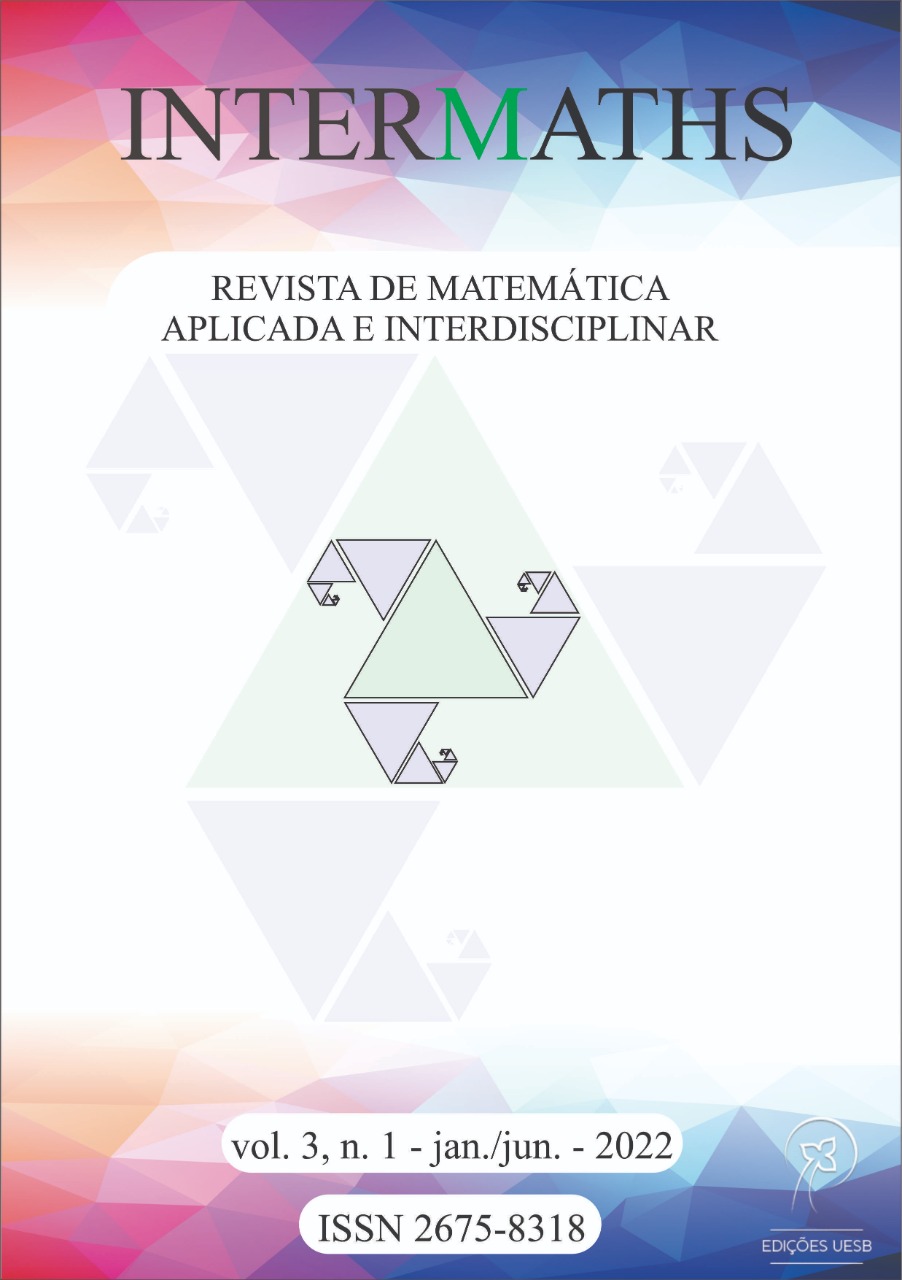A experiência da criação de um APP para uso em sala de aula: Intersecting Lines
DOI:
https://doi.org/10.22481/intermaths.v3i1.10721Palavras-chave:
Intersecting Lines, Jogos digitais, Educação MatemáticaResumo
O presente artigo tem como objetivo apresentar o Jogo Intersecting Lines, sua origem, suas regras e seus possíveis usos pedagógicos. A versão eletrônica do jogo ́e inédita e foi criada pelos autores com base em um jogo que originalmente é disputado com papel e caneta. Foi desenvolvido para dispositivos móveis (a princípio para o sistema operacional Android). É um jogo a ser disputado por dois jogadores: cada jogador possui uma cor que o define (azul ou vermelha). Cada jogada consiste em traçar um segmento que une dois pontos em lados distintos do quadrado, formando uma reta (line) da cor que representa cada jogador. Eles jogam alternadamente, até o final quando é feita a contagem dos pontos: para cada cruzamento de retas (lines) da mesma cor, são contabilizados 2 pontos para o jogador daquela cor. Vence o jogo, quem tiver a maior pontuação, ou seja, quem conseguir realizar o maior número de cruzamentos com retas de mesma cor. Percebe-se que O Jogo Intersecting Lines é um jogo de raciocínio que possui grande potencial para abordagem de conteúdos matemáticos.
Downloads
Referências
[1] M. O. de Moura, “O jogo e a construção do conhecimento matemático,” In O jogo e a construção do conhecimento na Pré-escola. C. M. Conholato and J. Fares, Eds. São Paulo: Série Idéias - FDE, no. 10, 1991, pp. 45-52. [Online]. Available: http://www.crmariocovas.sp.gov.br/dea_a.php?t=020
[2] EDITORA ABRIL. Coleção completa Superinteressante. Cruzamentos Perigosos por Luiz Dal Monte Neto, 1996.
[3] R. C. Grando, “O conhecimento matemático e o uso de jogos na sala de aula,” Tese de doutorado em Educação, Faculdade de Educação, Universidade Estadual de Campinas, 2000. https://doi.org/10.47749/T/UNICAMP.2000.210144
[4] A. C. O. Morgado, J. B. Pitombeira, P. C. P. Carvalho and P. Fernandez, Análise Combinatória e Probabilidade, 11nd ed. SBM, Rio de Janeiro, 2008.
[5] F. Pingaud and J.-F. Germe, 50 jeux avec du papier et des crayons: Et comment les programmer sur votre micro-ordinateur. Monaco: Éditions du Rocher, 1984. Source. Jeux et stratégie: Collection.
[6] J. P. da Ponte, ”Tecnologias de informação e comunicação na formação de professores: que desafios?,”Revista Iberoamericana de educación, vol. 24, pp. 63-90, 2000. https://doi.org/10.35362/rie240997
[7] M. M. Queiroz, ”Intersecting Lines: um Jogo de Raciocínio,”Trabalho de Conclusão de Curso, Licenciatura em Matemática, Universidade Estadual do Sudoeste da Bahia, Vitória da Conquista (BA), 2021.
Downloads
Publicado
Como Citar
Edição
Seção
Licença
Copyright (c) 2022 INTERMATHS

Este trabalho está licenciado sob uma licença Creative Commons Attribution 4.0 International License.
 All content of Revista INTERMATHS/Journal INTERMATHS is licensed under a Creative Commons - Atribuição 4.0 Internacional (CC-BY 4.0).
All content of Revista INTERMATHS/Journal INTERMATHS is licensed under a Creative Commons - Atribuição 4.0 Internacional (CC-BY 4.0).












